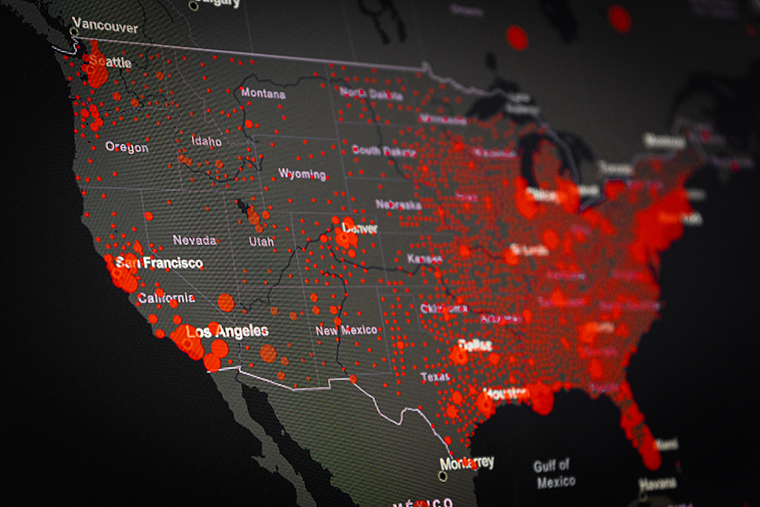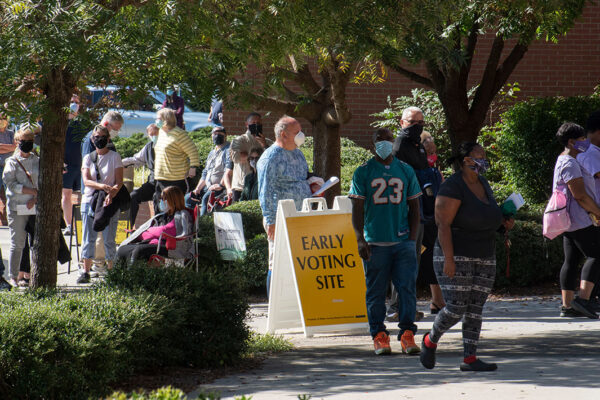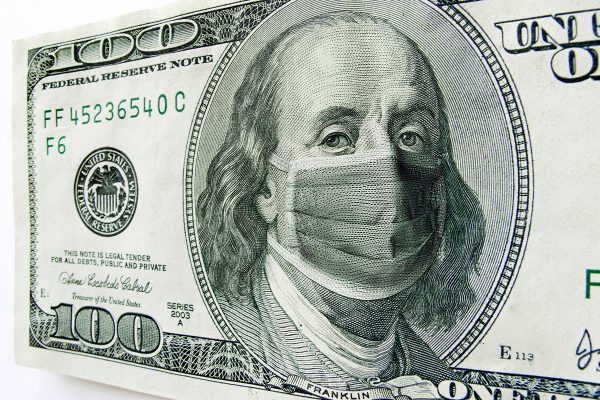The rate in which COVID-19 cases spread is not proportionate with the number of contagious individuals – as prior models assumed – but rather concave, meaning that the impact of one more infected person diminishes as more people are infected. The disproportionate spread occurs because people typically live and work in inter-related social networks, meaning people stay in the same circles, according to researchers at Washington University in St. Louis.
This finding, reported by Olin Business School’s Meng Liu, Raphael Thomadsen and Song Yao, has a significant impact on the disease forecast going into the summer and early fall as states begin to reopen at varying levels.
At this level of social distancing, COVID-19 cases are forecast to continue a steady and slow plateau – going from slightly over 20,000 cases per day in early June to 14,000 cases per day in the end of September, according to their research.
Forecasting disease spread is an imperfect science based on constantly changing assumptions and evolving conditions. Early models assumed the disease spread would be proportionate with each infected individual infecting one additional person.
“Based on the standard susceptible-infected-recovered (SIR) model, new COVID-19 cases would grow exponentially without significant social distancing. Under the same model, declining rates of cases should indicate that the disease will quickly wind down,” said Thomadsen, professor of marketing. “However, these patterns are not consistent with the case levels we have observed after the daily new case levels peaked, which has been more of a gradual reduction in the number of cases.”
Unsatisfied with the available models, Thomadsen and team set out to use their skills as marketers and business scholars to develop a modified SIR model that was flexible and would apply theory into the data generation process to more accurately forecast COVID-19 cases.
Their modified SIR model combines COVID-19 case data with social distancing data – based on cellphone GPS location data. It also incorporates the percentage of the county population that has not yet had confirmed cases of COVID-19, the number of individuals who have been infected each day and the county’s population density.
“The most significant difference between this model and the standard SIR model is our model does not constrain the rate of disease spread to be proportionate to the number of contagious individuals,” said Liu, assistant professor of marketing.
Ultimately this small change in the forecasting model leads to predictions that fit the patterns of COVID-19 spread that we have observed much better than other forecasts.
“Based on this concave effect, following a brief period of exponential growth in the beginning or after reopening, we would expect new cases to quickly settle into a prolonged period of stable, slightly declining levels of disease spread,” Thomadsen said.
“We believe this result occurs because people have overlapping social connections, which causes contagious individuals to expose many of the same individuals. We see this directly when, for example, cases are clustered within households, nursing homes or places of work.”
Using this data, they also were able to determine that social distancing has a significant impact on the growth rate of COVID-19 cases. Humidity – which has been hypothesized to slow its spread – has a smaller effect while temperature is insignificant.
The model also provides insight as to how cases will likely grow or gradually decline between now and the end of September 2020 based on different reopening strategies.
Americans are currently at approximately 60% return-to-normalcy, based on cell phone data which shows the percentage of people who stay at home exclusively during a given day. At this level of social distancing, COVID-19 cases are forecast to continue a steady and slow plateau – going from slightly over 20,000 cases per day in early June to 14,000 cases per day in the end of September, according to their research.
The forecasts based on maximum and minimum social distancing efforts highlight the significant impact that policy has on disease spread. According to their forecasts, if the U.S. were to practice its maximum observed level of social distancing for even a few additional weeks, new cases would drop to a much lower level of around 2,000 cases per day by the end of September.
On the other hand, a complete return to normalcy would cause cases to surge for about two months. After that initial surge, cases would again reach a long-term plateau, although this would occur at a level that was more than double what would be experienced under current social distancing levels.
However, researchers acknowledge that other protective efforts like mask wearing and hand washing could lessen the impact of a full reopening.
“Social distancing greatly slowed down the spread of the virus. Based on our findings, a rushed reopening may be costly for many places in the U.S., especially the ones with high population densities,” said Yao, associate professor of marketing.
WashU Response to COVID-19
Visit coronavirus.wustl.edu for the latest information about WashU updates and policies. See all stories related to COVID-19.




Comments and respectful dialogue are encouraged, but content will be moderated. Please, no personal attacks, obscenity or profanity, selling of commercial products, or endorsements of political candidates or positions. We reserve the right to remove any inappropriate comments. We also cannot address individual medical concerns or provide medical advice in this forum.